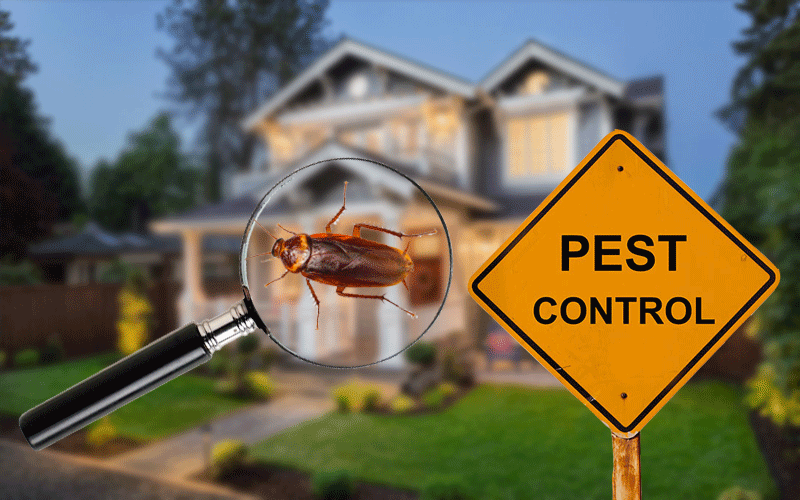A1 Charlotte Pest Control Companies - Your Neighborhood Pest Professionals
A1 Charlotte Pest Control Companies - Your Neighborhood Pest Professionals
Blog Article
Bed Pest Treatment Failure: Comparing Chemical Vs. Non-Chemical Solutions
In the world of pest control, especially when handling the persistent problem of bed bugs, the option between chemical and non-chemical therapy remedies can be an essential one. Both strategies offer unique benefits and disadvantages, influencing variables such as efficiency, security considerations, and total price. By taking a look at the nuanced information of each approach, a clearer understanding of which course to seek in resolving a bed bug problem can be acquired.
Efficiency of Chemical Treatments
Chemical treatments for bed insect invasions have actually been extensively acknowledged for their rapid and potent efficacy in getting rid of these bugs. When taking into consideration the efficiency of chemical treatments, it is important to understand that they can offer a detailed and fast option to a bed pest trouble.
Furthermore, chemical treatments have the advantage of providing recurring effects, indicating that they can proceed to remove bed bugs also after the initial application. This residual activity is especially useful in combating any type of prospective re-infestations. Additionally, the fast action of chemical therapies can bring alleviation to people facing serious bed bug infestations, allowing them to regain control of their home promptly.
Security Interest In Chemical Solutions
When using chemical services for bed insect therapy is guaranteeing the safety of occupants and the setting,One critical aspect that needs cautious consideration. While chemical therapies can be effective in eliminating bed bugs, they may position dangers otherwise taken care of appropriately. One of the main safety concerns with chemical services is the prospective injury they can create to human health and wellness. Direct exposure to specific chemicals made use of in bed bug treatments can cause respiratory system problems, skin inflammation, or other negative reactions, particularly in people with pre-existing conditions or sensitivities. Additionally, inappropriate application or dose of chemical pesticides can cause harmful deposits sticking around in the cured location, presenting long-term health dangers to occupants.
Furthermore, the ecological effect of chemical services is one more significant factor to consider. Some pesticides made use of in bed bug treatments may be unsafe to beneficial bugs, wildlife, and communities if they leach right into the soil or water supply. It is necessary to use chemical therapies sensibly, following safety standards, and considering much less poisonous alternatives to alleviate these dangers and guarantee the safe and reliable monitoring of bed pest invasions.
Advantages of Non-Chemical Strategies
Thinking about the prospective safety and security concerns and ecological influence connected with chemical solutions for bed insect therapy, discovering non-chemical methods provides an encouraging option with numerous distinctive benefits. Non-chemical therapies are eco friendly, as they do not contribute to air or water pollution, making them a sustainable selection for parasite control.
Furthermore, non-chemical solutions can be reliable in targeting bed pests, consisting of hard-to-reach locations where chemical treatments might not penetrate. Methods such as warmth therapy, vacuuming, vapor cleansing, and cushion coverings supply thorough removal without using unsafe chemicals. Additionally, non-chemical methods can be less disruptive, calling for very little prep work and enabling quicker reentry right into treated areas. Overall, deciding for non-chemical bed pest treatment approaches not only focuses on safety and environmental security however additionally makes sure effective and thorough pest control.
Limitations of Non-Chemical Treatments

Additionally, non-chemical treatments usually call for multiple applications to achieve successful removal. This can be taxing and might not always guarantee full removal of all bed pests and their eggs, especially in surprise or hard-to-reach locations.
Furthermore, the success of non-chemical therapies greatly depends on appropriate application and bed bug infestation thoroughness, which can be challenging for people without specialist proficiency. Poor application of non-chemical techniques might lead to incomplete eradication, causing persistent invasions and the demand for extra therapies.
For that reason, while non-chemical treatments have their advantages, it is important to acknowledge these limitations and consider them when identifying the most reliable approach for taking care of bed bug invasions.
Expense Comparison: Chemical Vs. Non-Chemical Options
Offered the constraints associated with non-chemical treatments, an important aspect to examine in the context of bed pest administration is the expense comparison in between chemical and non-chemical options. In contrast, non-chemical treatments like warmth treatment or vapor can be extra costly, with costs ranging from $1,000 to $6,000 for an entire home. While the initial expense of chemical treatments may seem lower, several treatments may be needed to totally eradicate the infestation, possibly increasing the total cost.
Verdict

Considering the prospective safety and security concerns and environmental effect linked with chemical remedies for bed bug therapy, exploring non-chemical strategies offers a promising choice with a number of unique benefits.Given the limitations connected with non-chemical therapies, a necessary aspect to review in the context of bed bug monitoring is the expense comparison home pest prevention between chemical and non-chemical alternatives. In comparison, non-chemical treatments like heat treatment or vapor can be much more pricey, with prices varying from $1,000 to $6,000 for a whole home. While the initial expense of chemical therapies might seem reduced, several treatments might be called for to fully remove the infestation, possibly boosting the general expense.In verdict, when contrasting chemical and non-chemical bed pest treatment choices, it is necessary to take into consideration effectiveness, safety and security, benefits, restrictions, and cost.
Report this page